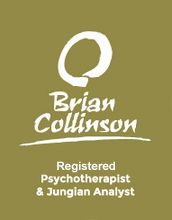Creating: Stagnation vs Generativity in Life’s Second Half

Erikson’s “Stagnation vs Generativity” describes a key dilemma and pain point for individuals in the second half of life.

Musician Brian Eno Talks About Generativity
Dr. Milton Erikson writes about a danger and an opportunity in life after 40, which ties in wonderfully with a lot that gets said by /a-midlife-transitions, such as Jung and Hillman. Erikson refers to this stage as the stage of “stagnation vs generativity”.
Boredom and Stagnation
Erikson clearly tells us of a real danger, from midlife on, of increasingly succumbing to boredom, stagnation and even rigidity.
In early adulthood, life and society puts lots of ready-made challenges in front of us. There is getting out and living in independence from family of origin, finding a career, finding a mate or partner, getting a house, perhaps having children. Yet, by midlife, these can seem routine. The life that the individual has created may no longer really fulfill. In Jung’s framework, this corresponds to “the end of the first adulthood” and “midlife transition“.
This may lead to stagnation, Erikson tells us. The individual may feel that they have failed to find a way to contribute, and may feel disconnected or uninvolved with their community, with society — or even their own lives. Erikson clearly views this as a tragic outcome.
Erikson and Generativity
Yet, Erikson tells us, there is another choice after 40. The individual need not stagnate, but may engage in what he calls generativity.
“Making a contribution” or “making your mark” are the hallmarks of generativity. This doesn’t mean that you have to be famous, or that you have to be a large-scale philanthropist. Generativity may be about contributing to society or community or to shared or cherished values. It almost always involves a creative response or action that makes some difference in support of values that I, as an individual, cherish:
- It may be activity in the community or in a group that furthers something that I believe in, or hold dear;
- It may be some kind of creative activity that I inherently cherish (painting, writing — cooking!);
- It may be some process of inner reflection or growth in understanding that I manifest increasingly in the world; or,
- It may be another creative response to the fact of being in my own unique life.
But I’m NOT Creative!
For many people, the response to all this may be, “But, I can’t paint, or sing, or give a stirring speech! …I’m not creative!”
Well, are you sure? Depth case studies stresses that creativity, or generativity, if you will, may not express itself, or emerge in the stereotypical or conventional ways. There are a vast number of creative ways in which a human being can respond to life!

The Underground River
The Underground River
It can be a generative activity to respond creatively by being aware of the unique character of this particular moment. It can be a generative act to genuinely and openly listen to another human being. It can be a generative activity to meet someone new in a community to which we belong. It can be a generative activity to meet someone new, who is a hitherto unknown and unexpected aspect of myself.
There is always within us the possibility of creative engagement with the moment. It may lead to humour, human tenderness, or a moment of insight. To try and be conscious of this, what I call “the underground river” running through every moment, is a key to the process of individuation, and runs very near to the heart of /a-midlife-transition.
Brian Collinson, Registered Psychotherapist & Jungian Analyst
[cta]
